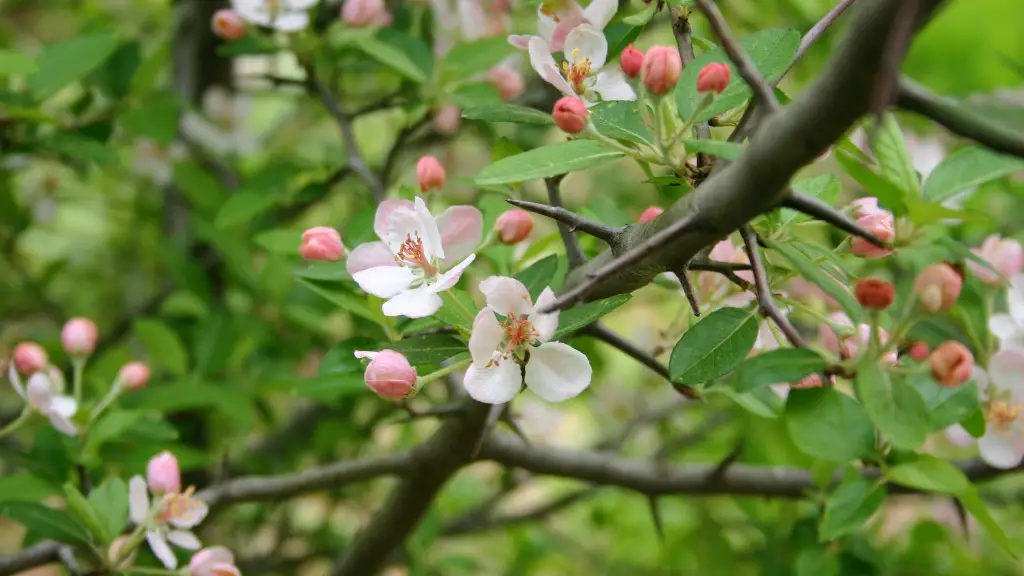Lemon trees are deciduous evergreen trees and are popular for their tart, acidic fruit. They are admired by cooks, bartenders, and home gardeners, who value their tartness. The best time to grow a lemon tree is when temperatures are between 50 and 80 degrees Fahrenheit. Lemon trees should not be grown in any place where the temperature falls below freezing for even a brief period, as this could damage their delicate growth.
When considering when to grow a lemon tree, climate and temperature are key considerations. Lemon trees grow best in sunny, warm climates, as they tend to struggle in colder climates. If growing indoors, find a bright, south-facing window with at least six to eight hours of direct sunlight each day. It’s also important to consider local growing seasons, spray schedules, and other environmental factors.
Soil is an important factor as well. Lemon trees prefer a sandy, slightly acidic soil and will do best in soil that is well-draining, with a pH between 6.2 and 7.0. They also like plenty of water and will benefit from regular liquid feeding, such as with a nutrient-rich fertilizer. When planting indoors, select a potting soil that is formulated for acid-loving plants.
When planting outdoor lemon trees, it is important to do so during their dormant period since they are still susceptible to cold temperatures at that time. So April is often the ideal time to plant a lemon tree. When planting, select a spot that is at least eight to 10 feet away from other trees and has good air circulation. Dig a hole that is twice the size of the container your tree is growing in and backfill with a nutrient-rich soil.
Once planted, water the tree regularly, about once a week (until the leaves become yellow, to signal over-watering) and feed it a nutrient-rich fertilizer every two to three months. Prune the tree back each year, removing any dead or crossed branches. After about two to three years, you should be able to start harvesting your lemons.
When to Fertilize a Lemon Tree
Regular fertilization of a lemon tree is essential to its growth and fruit production. However, it is important to know when to properly fertilize it to get the best results. During the tree’s active growing season, fertilization should be done every two to three months. Choose a fertilizer that is well-balanced and nutrient-rich, such as a 16-16-16 formula. In the winter months, when the tree is dormant, fertilization should be done less frequently, typically every six months.
Pruning a Lemon Tree
Regular pruning of a lemon tree will help it stay healthy and produce more fruit. When pruning, remove any dead or crossed branches, as well as any branches that are growing upward. Also remove any branches that are too close together, as this will encourage new growth. Pruning should be done during the tree’s dormant period, usually in early spring.
Harvesting Lemons
Once your lemon tree has been planted and well-cared for, you can begin harvesting the fruit. Typically, lemon trees take about two to three years to produce fruit. Lemons can be harvested when they are yellow and give slightly to the touch. If you’re harvesting for juice, wait until the lemons are ripe, which may be a few weeks after they turn yellow. For best results, pick your lemons in the morning, when they are their juiciest and most flavorful.
Protecting a Lemon Tree from Pests
Lemon trees are susceptible to different pests and diseases. The most common are aphids, scale, whitefly, mealy bugs, and fungal diseases. To protect your tree, keep the surrounding area clean and free of debris that can host pests. Water the tree early in the day and avoid wetting the leaves, as this can lead to fungal diseases. Regularly prune the tree to remove any dead branches or other areas that can be host to pests and disease.
Protecting a Lemon Tree from Wind Damage
Wind can cause significant damage to lemon trees, as the branches can be easily broken by strong gusts. To protect from wind damage, select a spot for the tree that offers some wind protection, such as beside a house or under a large tree. In addition, stretch protective netting, such as row cover, around the tree to provide a barrier against wind-blown debris. The netting should be tied securely, allowing for circulation and light penetration.
Caring for a Lemon Tree After Harvest
Even after harvest season has ended, there are still some important steps to take to help ensure that your lemon tree stays healthy and produces plenty of fruit in the future. As a part of regular maintenance, prune the tree to remove any dead or crossed branches. Water the tree as necessary, depending on the local climate. When the soil is dry to the touch, it is time to water your tree. You should also continue to fertilize your tree and monitor for pests on a regular basis.


